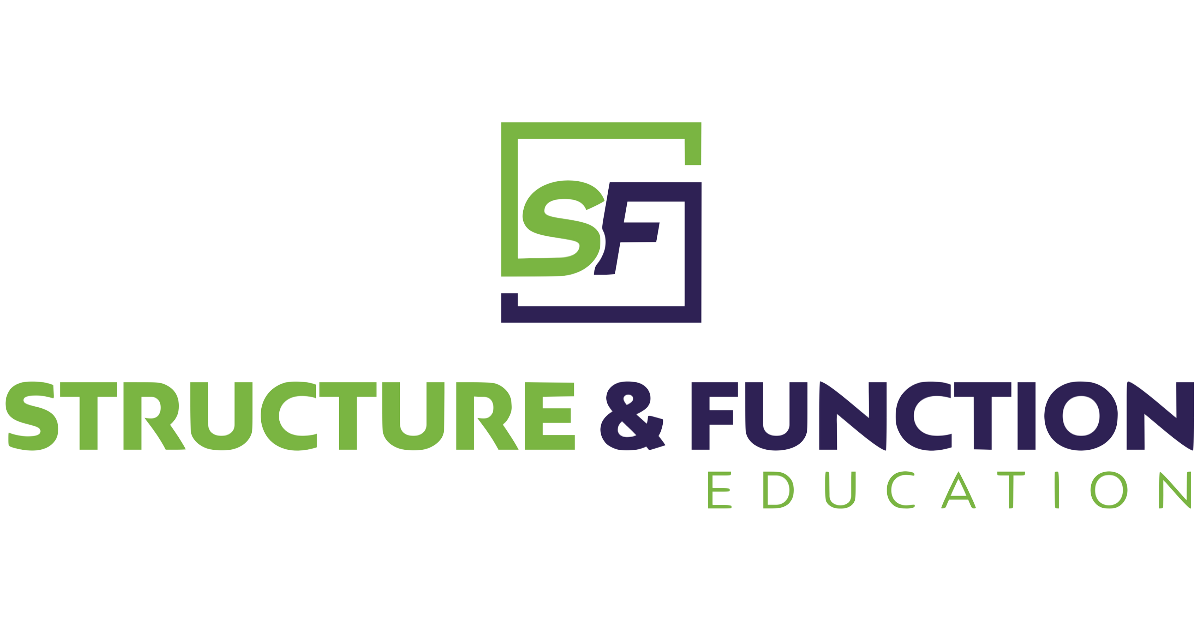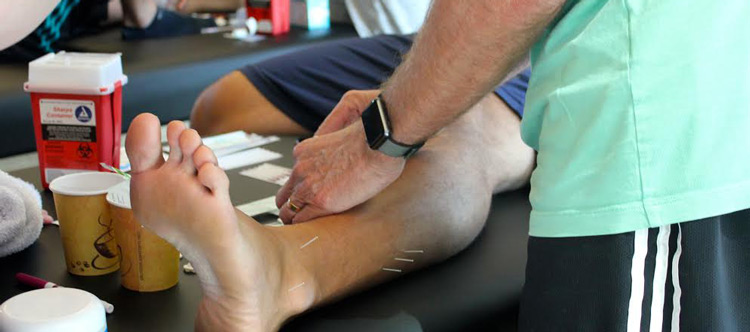The importance of the motion segment in rehabilitation to performance.
Bridging the Gap From Rehabilitation to Performance Chapter 4
Motion Segment: An Essential Element of Consistency in Transitioning from Rehabilitation to Performance
In Chapter 4 of Sue Falsone’s book, Bridging the Gap from Rehab to Performance, she discusses many movement issues. I will expand on her discussion of movement assessment, which she touches on in this chapter. Movement is vital to our existence, profoundly impacting our bodily and mental well-being. Movement is essential for our participation in society, encompassing fundamental daily actions like walking and eating to complex athletic feats. The intricacies of the human mobility system are often overlooked, leading to ineffective treatment approaches and persistent musculoskeletal issues. This underscores the essential significance of movement evaluation, which constitutes the foundation of modern physical therapy treatment.1
Conventional approaches to treating musculoskeletal issues typically focus on identifying the specific anatomical source of pain, such as diagnosing rotator cuff tears or biceps tendinopathy. While this pathoanatomical paradigm can be beneficial in many cases, it often overlooks the complexity of movement dysfunction. Pain and decreased functionality frequently arise from the intricate interactions within the entire movement system, including issues in biomechanics, motor control, and neuromuscular coordination.1-2 Focusing solely on one injured structure often disregards underlying movement dysfunctions, resulting in insufficient rehabilitation, ongoing pain, and recurrent injuries.
The limitations of the exclusively pathoanatomical approach have necessitated a significant transformation in physical therapy. Considering the intricate interactions among diverse components influencing movement, a comprehensive, systems-based approach is increasingly emphasized. This dynamic systems perspective recognizes the interrelation of individual characteristics (including age, gender, prior injuries, and psychological aspects), task demands (specific movements or activities), and environmental constraints (such as surfaces and equipment). Identifying these connections is crucial for determining the root causes of movement dysfunction and for developing effective therapies.1-3
Mobility assessment transcends the identification of the wounded region; it examines the intricate interplay of elements influencing an individual’s mobility, providing a holistic perspective of their movement system. This comprehensive assessment enables physical therapists, athletic trainers, and chiropractors to devise customized interventions that address particular movement problems instead of simply mitigating symptoms. Through extensive evaluations, we can more effectively address the underlying causes of musculoskeletal issues, facilitating complete recovery, easing discomfort, and reducing the likelihood of recurrent injuries. 1-3 Consequently, movement assessment has become a crucial component of contemporary physical therapy, allowing for the delivery of more effective, patient-centered care.
The Progression of Movement Evaluation:
From Symptom Management to Systems-Oriented Care
The advancement of movement evaluation in rehabilitation settings represents a significant shift in the healthcare sector, moving from a reductionist, symptom-focused methodology to a more comprehensive, systems-based perspective on human health and functionality. Initially, the focus in the discipline was mainly on alleviating the immediate symptoms of musculoskeletal pain, often employing a pathoanatomical approach.1
The Initial, Primarily Pathoanatomical Approach1: In the early phases of physical therapy, evaluations primarily focused on identifying the precise anatomical components associated with pain or dysfunction. This pathoanatomical approach was often shaped by the medical paradigm, which mainly aimed to identify and treat the affected tissue, such as identifying a meniscus tear and suggesting surgical intervention. Therapeutic methods concentrated on addressing the localized pathology using modalities such as heat, cold, and ultrasound, along with manual therapy and targeted exercises aimed at strengthening or stretching the affected region. While effectively alleviating immediate symptoms, this method frequently neglected the underlying mobility limitations and their impact on overall functionality. As a result, this reactive approach often led to inadequate recovery and a heightened risk of re-injury.1
The Rise of Kinesiopathology and a Systems Perspective1: Over time, physical therapists, athletic trainers, and chiropractors have progressively recognized the limitations of a solely pathoanatomical approach. Clinical experiences have shown that pain and dysfunction often emerge from complex interactions throughout the entire movement system rather than from discrete anatomical problems. The concept of kinesiopathology has arisen, highlighting that movement impairments—how an individual moves—may act as the fundamental cause of musculoskeletal issues, rather than only a result.1 This transition represents a shift from solely treating symptoms to concentrating on the fundamental movement problem.
This new knowledge required a more thorough, systems-based approach to evaluation. The dynamic systems theory has gained prominence, highlighting the interrelation of factors influencing movement, including individual traits such as age, genetics, and previous injuries; task requirements related to specific activities; and environmental conditions involving surfaces and equipment. This expanded viewpoint has contested the conventional reductionist methodology, highlighting the need to understand the intricate interactions of different variables influencing movement.
The Integration of Varied Assessment Methodologies1: This systems-oriented viewpoint has resulted in the amalgamation of multiple assessment techniques. Observational analyses, focusing on the quality and efficiency of movements in functional tasks, have become increasingly significant alongside quantitative methods like biomechanical analyses, which utilize motion capture and force plates to deliver objective data on joint angles, muscle activity, and exerted forces. Cognitive evaluations have been created to examine an individual’s ability to deliberately regulate movement, hence improving the understanding of the underlying neurological elements.1
The Functional Movement Screen (FMS)4-5 A Notable Advancement: The development of the Functional Movement Screen (FMS) is a significant achievement in this domain. The FMS assesses fundamental movement patterns to identify movement limits that may increase the risk of injury, emphasizing the interrelation of different body segments. The FMS is not a diagnostic tool but a screening instrument designed to identify individuals who may require a more thorough assessment and intervention. The widespread implementation of the FMS highlights the growing recognition of the importance of proactive, systems-oriented movement evaluation.
The Functional Movement Screen (FMS): An Effective Tool.
The Functional Movement Screen (FMS), as articulated by Cook et al.4-5, is a prevalent assessment tool that examines basic movement patterns to detect any movement restrictions and asymmetries that could increase the risk of injury. Instead of focusing on attaining “perfect” movement, the FMS aims to determine if individuals have the necessary movement abilities required for daily activities and sports. The FMS comprises seven main movement evaluation patterns:
- Deep Squat: Assesses hip, knee, and ankle mobility, as well as core stability.
- Hurdle Step: Evaluate single-leg stability and the mobility of the hip, knee, and ankle joints.
- In-Line Lunge: Assesses hip, knee, and ankle mobility and stability, along with trunk control and balance.
- Shoulder Mobility: Assesses the range of motion in the shoulder.
- Active Straight Leg Raise (ASLR): Evaluates hamstring flexibility and core stability.
- Trunk Stability Push-up: Assesses trunk stability while performing a push-up.
- Rotary Stability: Assesses multi-planar trunk stability during a simultaneous upper and lower extremity movement.
The Movement System: A Multifaceted Perspective
Human movement should not be viewed as an isolated phenomenon; instead, it embodies a complex interplay among person, task, and environmental elements. This complex interaction, best analyzed through dynamic systems theory, highlights the interdependence of numerous factors that affect movement patterns. Personal characteristics, including age, gender, anatomical differences, past injuries, and psychological elements like fear-avoidance attitudes, substantially influence an individual’s movement ability. The precise tasks or activities completed significantly affect an individual’s movement performance, with different tasks necessitating diverse coordination tactics and varying levels of expertise. The surrounding environment, including surfaces, impediments, and accessible equipment, significantly influences movement patterns, requiring ongoing changes to navigate various situations effectively. A thorough comprehension of human mobility necessitates an evaluation of the intricate interaction between individual traits, task requirements, and environmental limitations.1-3
Contemporary movement assessment approaches integrate many techniques, combining qualitative observations with quantitative data to provide a comprehensive picture of a patient’s movement system. This systems-oriented approach fosters the creation of tailored treatment regimens that target specific movement deficiencies, facilitating patients in attaining their functional objectives while reducing the likelihood of damage. The progression of mobility assessment is ongoing, propelled by persistent research endeavors and a dedication to providing optimal, patient-focused care.
Rationale for Movement Screening: A Comprehensive Perspective for Therapists
The integration of movement screening in physical therapy offers significant advantages beyond merely identifying injuries. These benefits include objectives such as injury prevention, performance enhancement, and optimizing functional recovery. The subsequent discussion elaborates on these rationales, providing a thorough perspective for physical therapists, athletic trainers, and chiropractors.
- Improved Injury Prevention: Movement screening serves as a valuable tool for proactive injury prevention. By detecting movement limitations and asymmetries in asymptomatic individuals, physical therapists, athletic trainers, and chiropractors can rectify underlying biomechanical inefficiencies before they escalate into injuries. Early intervention through corrective exercise and neuromuscular re-education can substantially reduce the risk of future injuries, especially in high-risk groups, such as athletes or individuals engaged in strenuous physical activities. This preventative strategy is crucial for enhancing patient outcomes and reducing healthcare expenses related to injury management and rehabilitation. 3-5
- Optimized Athletic Performance: Movement screening is essential for enhancing athletic performance. Efficient movement patterns are fundamental to success in athletics, affecting speed, power, agility, and overall skill acquisition. By identifying compensations and inefficiencies in movement, physical therapists, athletic trainers, and chiropractors can create targeted interventions to improve fundamental movement mechanics, thus facilitating enhanced athletic performance. This approach is especially advantageous for elite athletes, as even minor improvements in movement efficiency can significantly impact competitive outcomes. 3-5
- Improved Return-to-Sport Outcomes: For athletes recovering from injury, movement screening plays a vital role in ensuring a safe and effective reintegration into sport. It helps determine when an athlete is ready to resume training, thereby reducing the risk of re-injury gradually. The assessment provides objective data on functional movement abilities, enabling a gradual and controlled return to activity customized to the individual’s specific needs and recovery path. This systematic approach enhances recovery outcomes and helps prevent setbacks, ultimately supporting the athlete’s overall well-being. 3-5
- Improved Functional Capacity in Non-Athletes: The benefits of movement screening extend beyond the athletic demographic. For individuals suffering from musculoskeletal pain or functional limitations, movement screening identifies underlying movement dysfunctions that may hinder daily activities. This systematic evaluation is beneficial in diverse settings, including geriatric care, workplace ergonomics, and general rehabilitation, thereby enhancing functional capacity and overall quality of life. Early identification of these subtle impairments enables timely and focused interventions, reducing the risk of progression to more severe disabilities. 3-5
- Enhanced Treatment Planning and Goal Setting: Movement screening provides critical data for developing effective and tailored treatment plans. The information obtained informs the choice of appropriate interventions, allowing physical therapists, athletic trainers, and chiropractors to tackle the root causes of movement dysfunction. This approach goes beyond simple symptom management by addressing the impairment’s core mechanisms. Furthermore, the objective results from movement screenings improve the accuracy of goal setting, ensuring that interventions are focused on functional outcomes that align with the unique needs and expectations of the patient. 3-5
- Objective Assessment of Progress: Movement screenings provide objective metrics to track progress and demonstrate the effectiveness of interventions. Repeated evaluations using standardized assessments generate quantifiable data that indicates changes in movement patterns and functional abilities over time. This objective data is essential for patient education, promoting adherence, and validating the therapeutic program’s effectiveness to third-party payers. 3-5
- Cost-Effectiveness: Although the initial investment in movement screening may seem like an extra expense, it is ultimately highly cost-effective over time due to its ability to decrease injury incidence. The early detection and intervention of potential issues are more economical than treating established injuries, thus reducing long-term healthcare costs associated with pain management, rehabilitation, and productivity loss. 3-5
In summary, movement screening serves as a versatile and comprehensive tool that offers significant advantages to physical therapists, athletic trainers, and chiropractors. It enhances injury prevention, optimizes athletic performance, improves return-to-sport outcomes, increases functional capacity across diverse populations, informs treatment planning, facilitates objective progress evaluation, and demonstrates cost-effectiveness. By incorporating movement screening as a core element of physical therapy practice, clinicians can substantially impact patient outcomes and the overall efficacy of healthcare delivery.
The Function of the Therapist: Specialists in Movement Systems
Physical therapists, athletic trainers, and chiropractors are uniquely equipped to play a crucial role in the evaluation and intervention of movement, functioning as specialists within the movement system. Our proficiency extends beyond the simple management of injuries; we are committed to enhancing human movement across the lifespan, targeting the root causes of dysfunction, and enabling individuals to achieve their maximum potential. This comprehensive role includes several vital domains:1-5
1. Comprehensive Movement Assessment:
Physical Therapists, Athletic Trainers, and Chiropractors possess advanced clinical skills for conducting thorough movement assessments. These professionals integrate subjective information from patient interviews—encompassing pain history, functional limitations, and activity levels—with objective data collected through diverse assessment methods, including observational analysis, biomechanical analysis (when relevant), and standardized movement assessments such as the Functional Movement Screen (FMS). This holistic approach fosters a deep understanding of the patient’s movement system, going beyond symptom identification to reveal the underlying causes of dysfunction.
2. Diagnostic Reasoning and Clinical Judgment:
Our proficiency lies in synthesizing subjective and objective assessment data to develop a comprehensive understanding of each patient’s unique presentation. This process involves adept diagnostic reasoning, considering the interplay of various factors affecting movement, including biomechanical limitations, motor control impairments, neuromuscular coordination deficits, psychological influences, and environmental constraints. This analytical approach informs the selection of appropriate interventions and ensures that treatment plans are tailored to each patient’s specific needs.
3. Individualized Treatment Planning:
Physical therapists, athletic trainers, and chiropractors develop and implement highly tailored treatment plans based on comprehensive assessments and diagnostic reasoning. The interventions are specifically designed to address identified movement impairments rather than simply alleviating symptoms. A variety of methodologies are utilized, including manual therapy (mobilization, manipulation), therapeutic exercise (strength training, flexibility exercises, neuromuscular re-education), and patient education aimed at improving movement patterns, reducing pain, and enhancing functional performance. This personalized approach ensures that the treatment aligns with each patient’s unique goals and preferences.
4. Motor Learning and Skill Development:
A fundamental aspect of our duties involves assisting patients in the motor learning process to develop new movement patterns or refine existing ones. We utilize a variety of techniques to enhance motor skill acquisition, including feedback provision, the practice of correct movement strategies, and the encouragement of optimal task-specific practice. This focused approach ensures that improvements are not merely temporary but lead to lasting changes in movement control and functional performance.
5. Proactive Injury Prevention and Health Promotion:
Physical therapists, athletic trainers, and chiropractors play a proactive role in injury prevention and overall health enhancement. They utilize movement assessments to identify individuals at risk of injury, subsequently formulating strategies to mitigate these risks. This approach includes correcting underlying movement deficiencies, improving strength and conditioning, and educating patients on injury mechanisms and preventive measures. The focus on optimizing movement extends beyond injury prevention to encompass broader health and wellness goals.
6. Collaboration and Communication:
Effective physical therapy requires collaboration with diverse healthcare professionals, including physicians, athletic trainers, and occupational therapists. We engage in active communication concerning our findings from movement assessments, ensuring seamless care integration and optimal outcomes. Furthermore, clear communication with patients is essential, as it enhances their comprehension of movement impairments, treatment plans, and the importance of adherence to prescribed interventions.
7. Ongoing Evaluation and Program Modification:
Movement assessment is not a one-time event but an ongoing process. We regularly reevaluate patients’ progress to ensure that interventions remain suitable and effective, modifying the treatment plan as needed. This flexible approach aligns with individual responses, maximizing outcomes and ensuring patients receive the most effective care.
Conclusions
The assessment of movement has undergone significant evolution, transitioning from a limited focus on the treatment of isolated injuries to a comprehensive, systems-oriented approach. Contemporary physical therapy employs a multidimensional perspective, integrating various assessment methodologies, including observational analysis, biomechanical analysis, cognitive evaluations, and standardized screening tools such as the Functional Movement Screen (FMS), to acquire a thorough understanding of a patient’s movement system. This holistic approach allows practitioners to transcend mere symptom management and address the fundamental causes of movement dysfunction, ultimately enhancing patient outcomes. The role of the physical therapist has broadened to include injury prevention, performance enhancement, and the optimization of functional movement across the lifespan. This transformation underscores a commitment to patient-centered care and a profound understanding of the intricate interplay of factors that influence human movement.
In conclusion, the role of the therapist in the assessment and intervention of movement is both intricate and essential to the provision of effective patient-centered care. We have the capacity to evolve into experts within the movement system, adeptly integrating a variety of competencies to enhance movement and promote the health and well-being of our patients. Our unwavering commitment to comprehensive assessment, individualized treatment, motor skill development, injury prevention, and collaborative care ensures the delivery of exemplary care and optimizes outcomes. This is the focus of Sues Book! Each chapter of “Bridging The Gap From Rehabilitation to Performance” illuminates knowledge and sheds light on concerns that are fundamental to the field. Should you wish to purchase this book and access chapters as I continue to explore this book chapter by chapter, please do so at the following link.
References
- Sahrmann S. THE HOW AND WHY OF THE MOVEMENT SYSTEM AS THE IDENTITY OF PHYSICAL THERAPY. Int J Sports Phys Ther. 2017 Nov;12(6):862-869. PMID: 29158948; PMCID: PMC5675362.
- Dingenen B, Blandford L, Comerford M, Staes F, Mottram S. The assessment of movement health in clinical practice: A multidimensional perspective. Phys Ther Sport. 2018 Jul;32:282-292. doi: 10.1016/j.ptsp.2018.04.008. Epub 2018 Apr 12. PMID: 29793832.
- Bennett H, Arnold J, Norton K, Davison K. Are we really “screening” movement? The role of assessing movement quality in exercise settings. J Sport Health Sci. 2020 Dec;9(6):489-492. doi: 10.1016/j.jshs.2020.08.002. Epub 2020 Aug 11. PMID: 32791205; PMCID:
- Cook G, Burton L, Hoogenboom BJ, Voight M. Functional movement screening: the use of fundamental movements as an assessment of function – part 1. Int J Sports Phys Ther. 2014 May;9(3):396-409. PMID: 24944860; PMCID: PMC4060319.
- Cook G, Burton L, Hoogenboom BJ, Voight M. Functional movement screening: the use of fundamental movements as an assessment of function-part 2. Int J Sports Phys Ther. 2014 Aug;9(4):549-63. PMID: 25133083; PMCID: PMC4127517.





